Abstract
Twin concordance rates for a binary trait can provide information about causes of trait variation. However, if trait prevalence varies with age (or birth cohort) or between the sexes, trait concordance rates will be artificially inflated because of the matching within pairs of twins. Our previous paper showed how to minimize the effects of such confounding by using logistic regression to model trait prevalence as a function of age and sex and that the binary correlation coefficient was useful as a measure of concordance that can be adjusted for trait prevalence. This method is extended here to allow for nested analyses and is applied to the smoking habits of a sample of 3,807 pairs of adult twins. For monozygotic (MZ) twins, the correlation coefficients for the binary trait of "ever-smoking" (males: .50 +/- .04; females: .60 +/- .02) were significantly greater than for dizygotic (DZ) twins (males: .37 +/- .05; females: .31 +/- .04; unlike-sex pairs: .21 +/- .03). For "giving-up smoking," given that both twins were previously smokers, the correlations for MZ twins (males: .37 +/- .07; females: .29 +/- .05) were also greater than for DZ twins (males: .11 +/- .09; females: .26 +/- .08; unlike-sex pairs: .13 +/- .06), although the difference was not statistically significant for females. Current smokers who had been smoking for at least 10 years were arbitrarily defined as "committed-smokers." The binary trait of "committed-smoking" was more strongly correlated in MZ twins (males: .41 +/- .06; females: .41 +/- .04) than in DZ twins (males: .22 +/- .08; females: .18 +/- .05; unlike-sex pairs: .16 +/- .05). These observations suggest that as well as depending on socially determined environmental factors, smoking behavior is influenced by genetic factors and/or by environmental factors unique to the MZ twin environment, which are of particular importance as determinants of "committed-smoking." There is a need for further research to investigate the personal characteristics of "committed-smokers" and to seek intervention strategies that are more suited to the needs of individual smokers.
Full text
PDF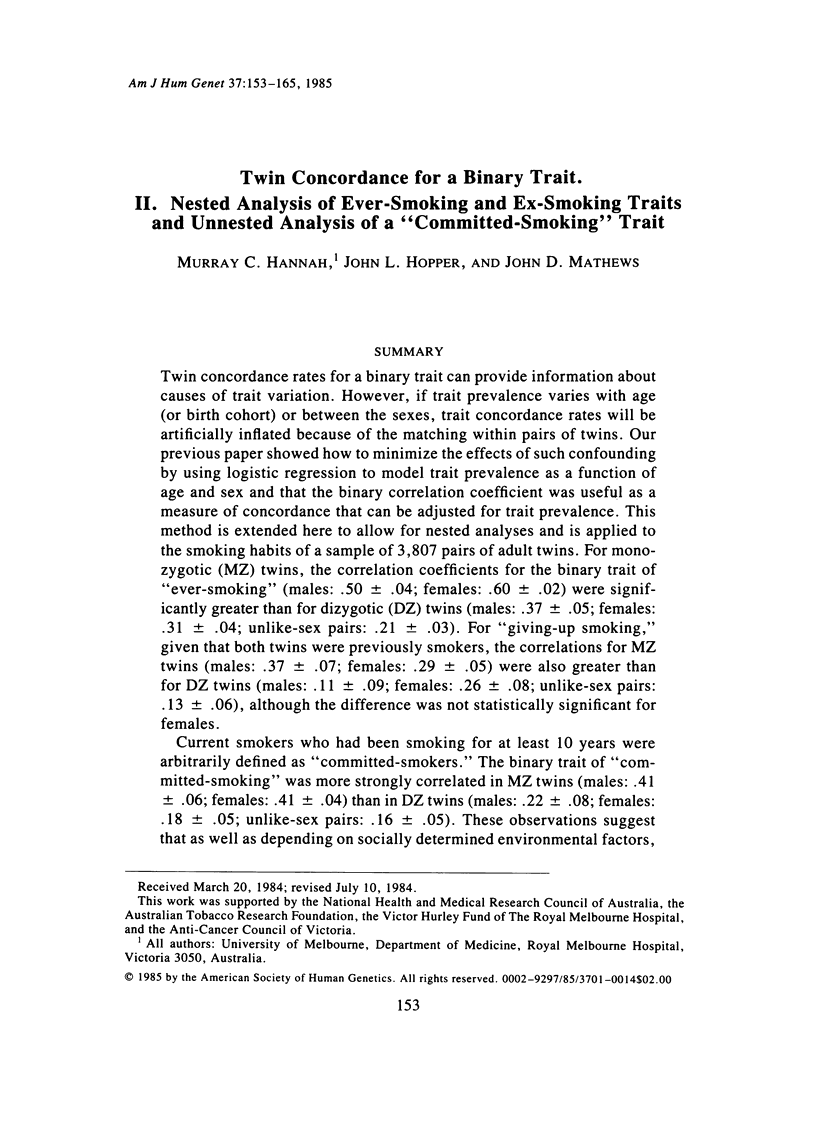
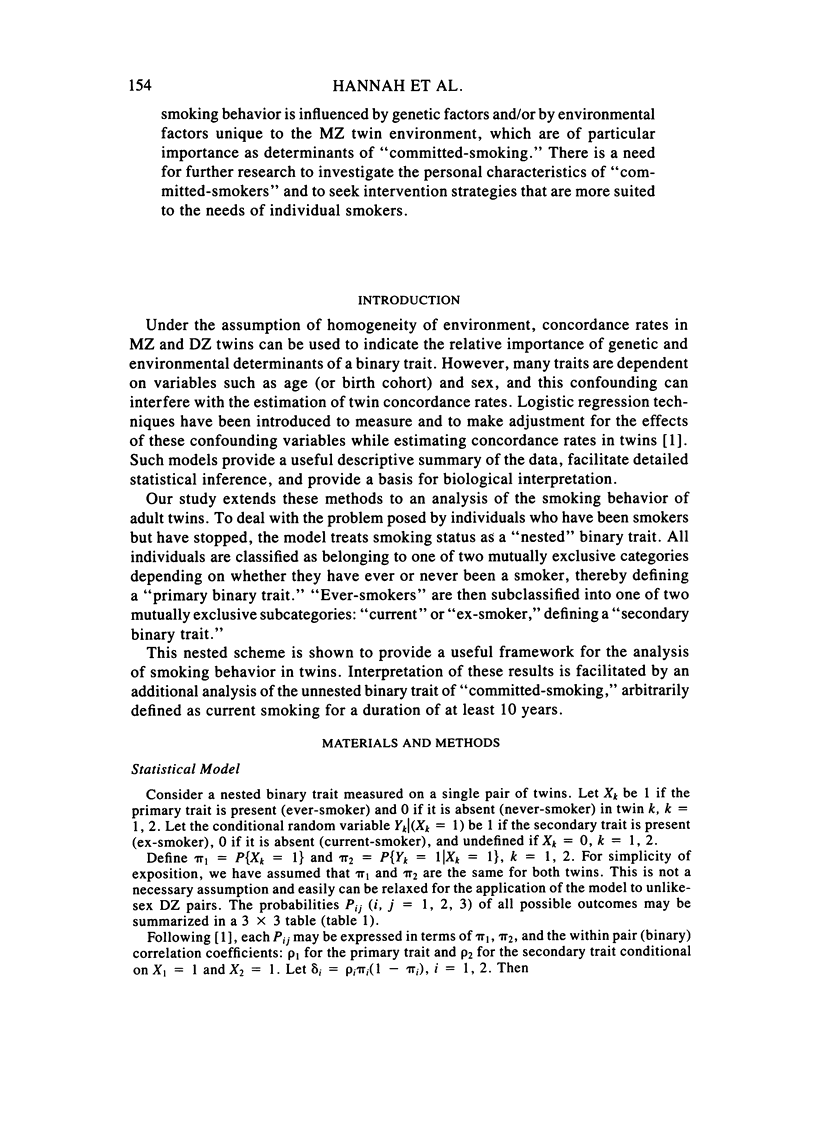
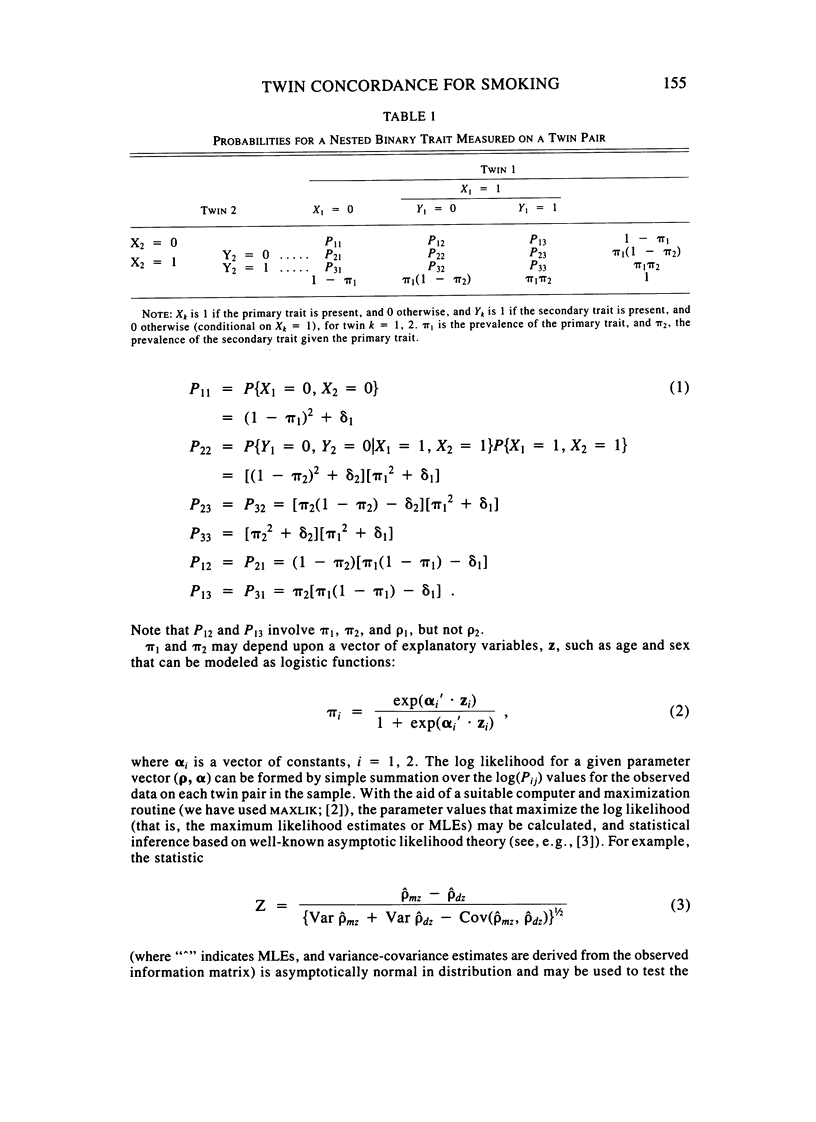
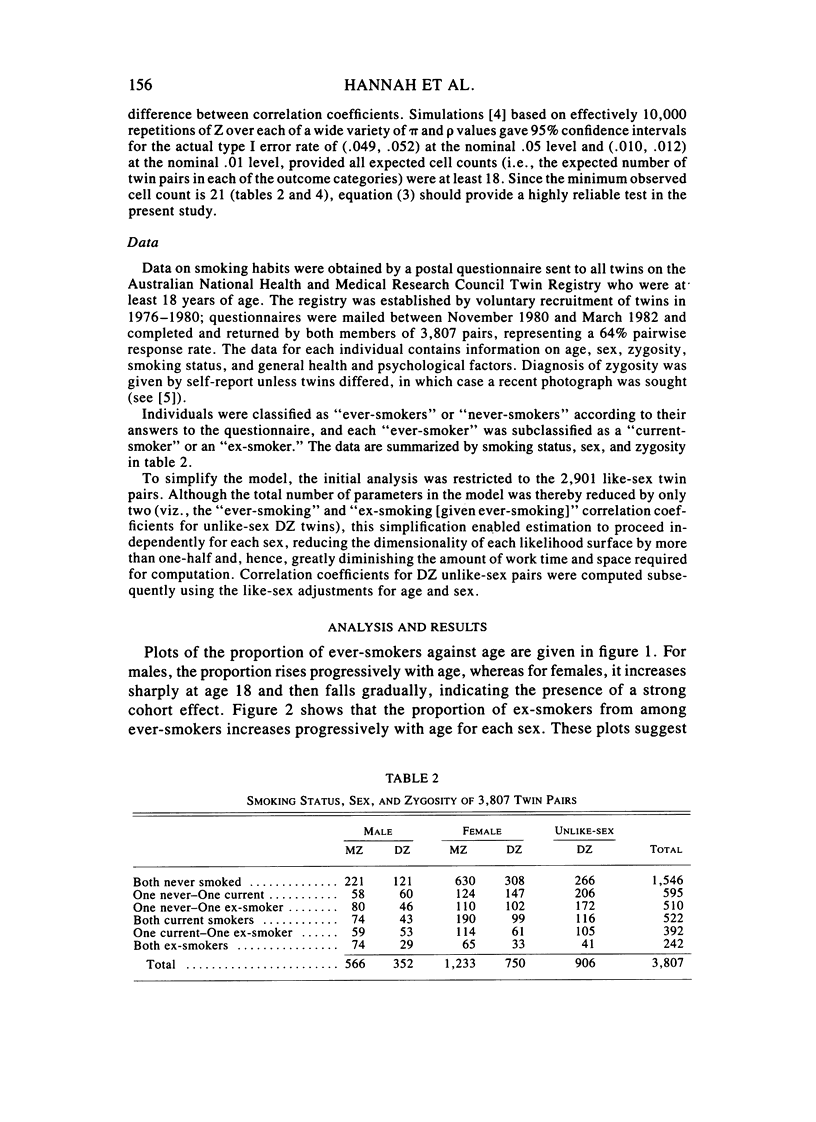
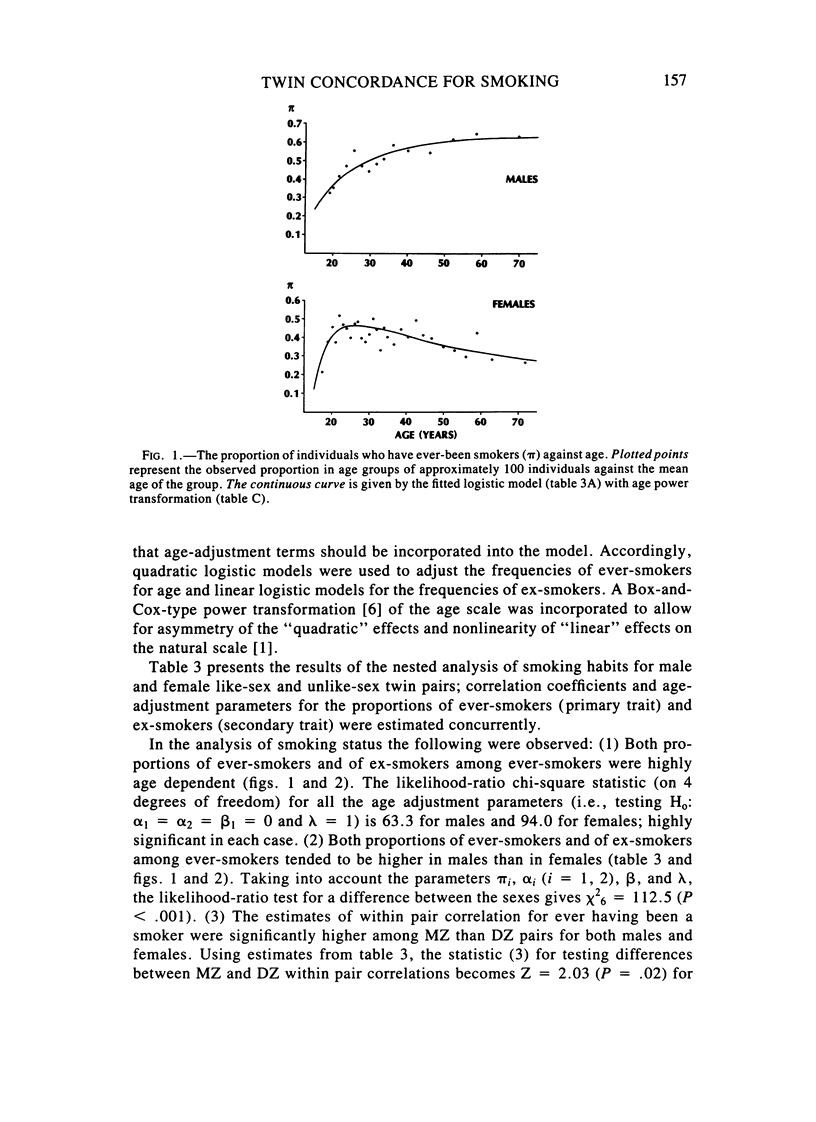
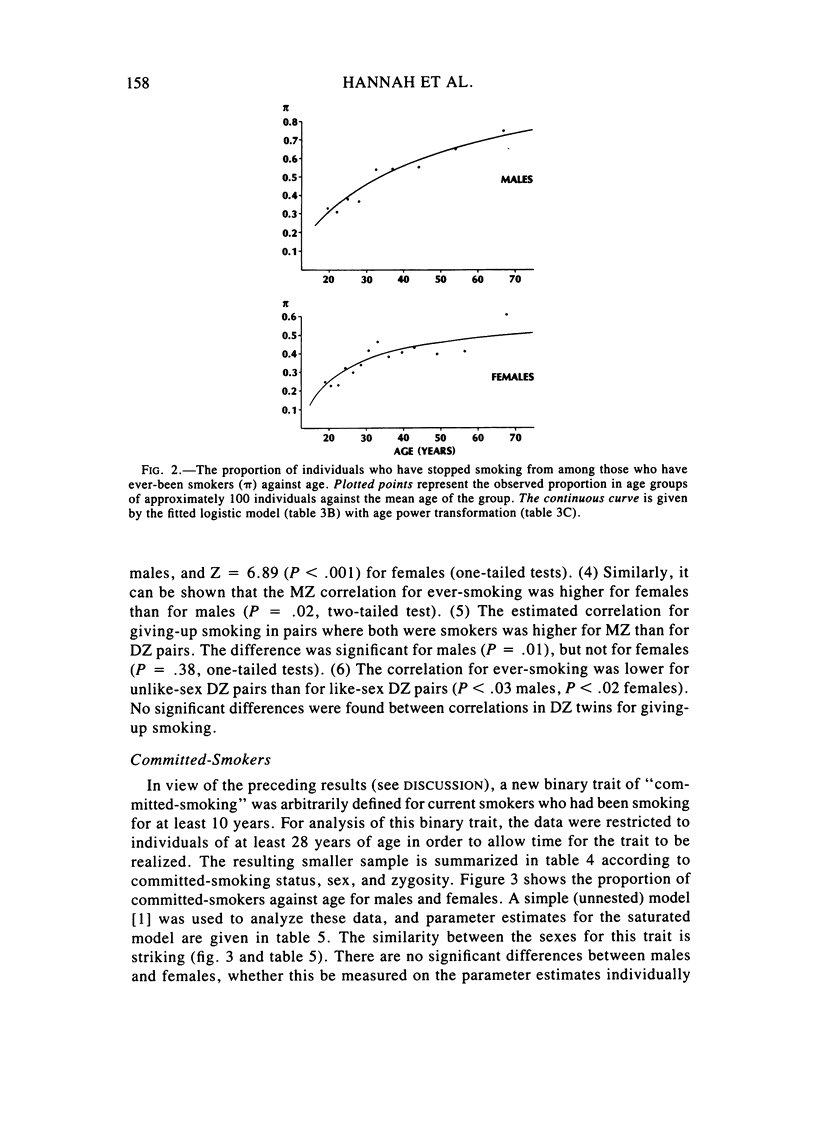


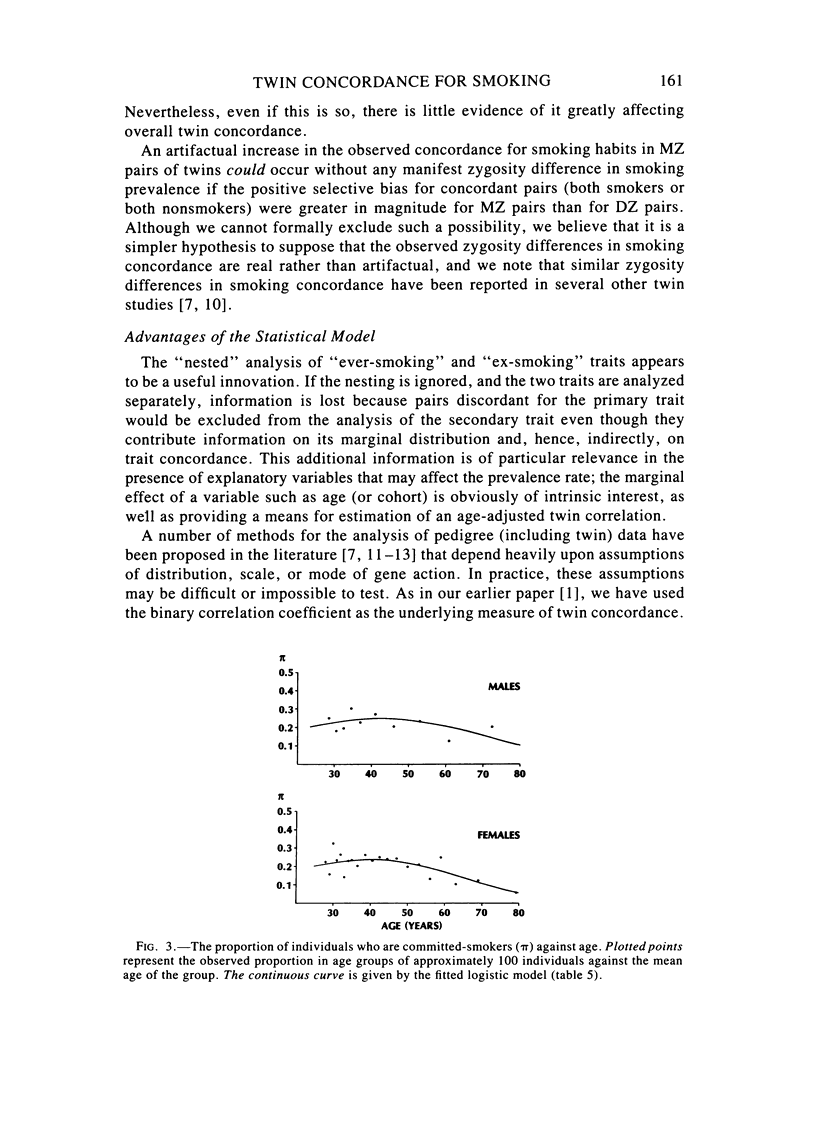
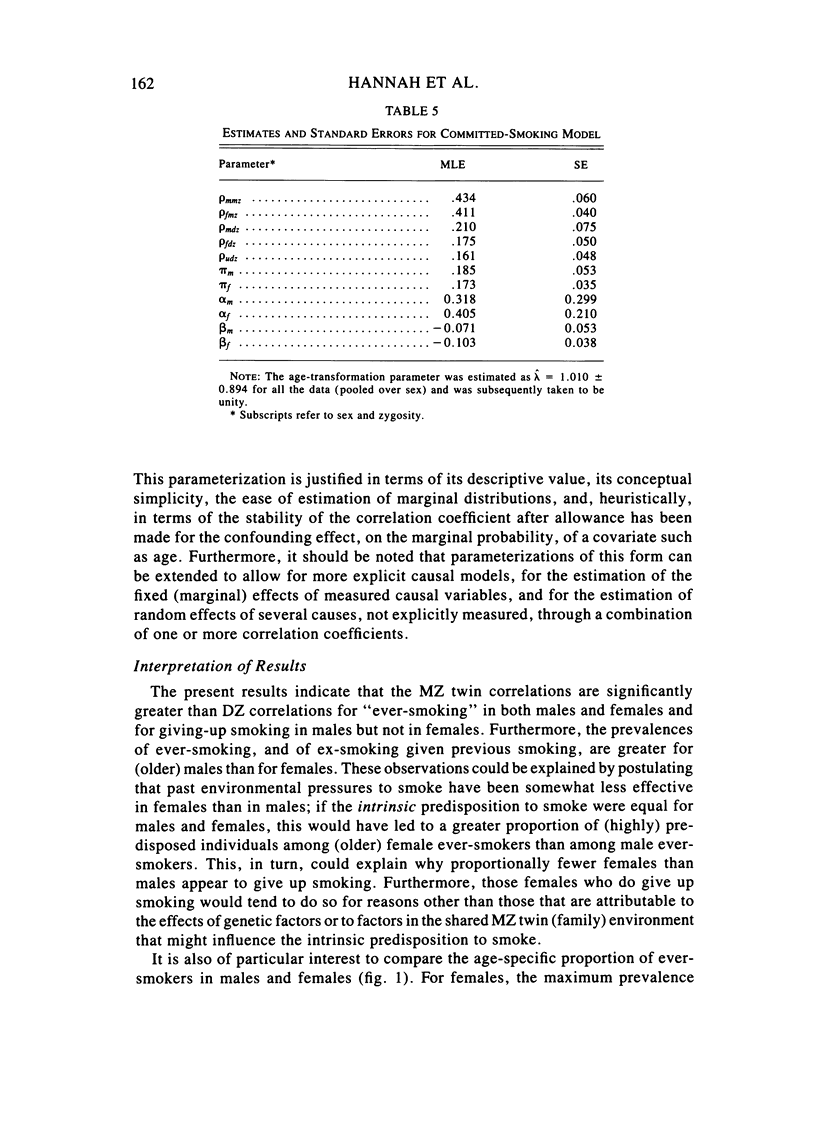


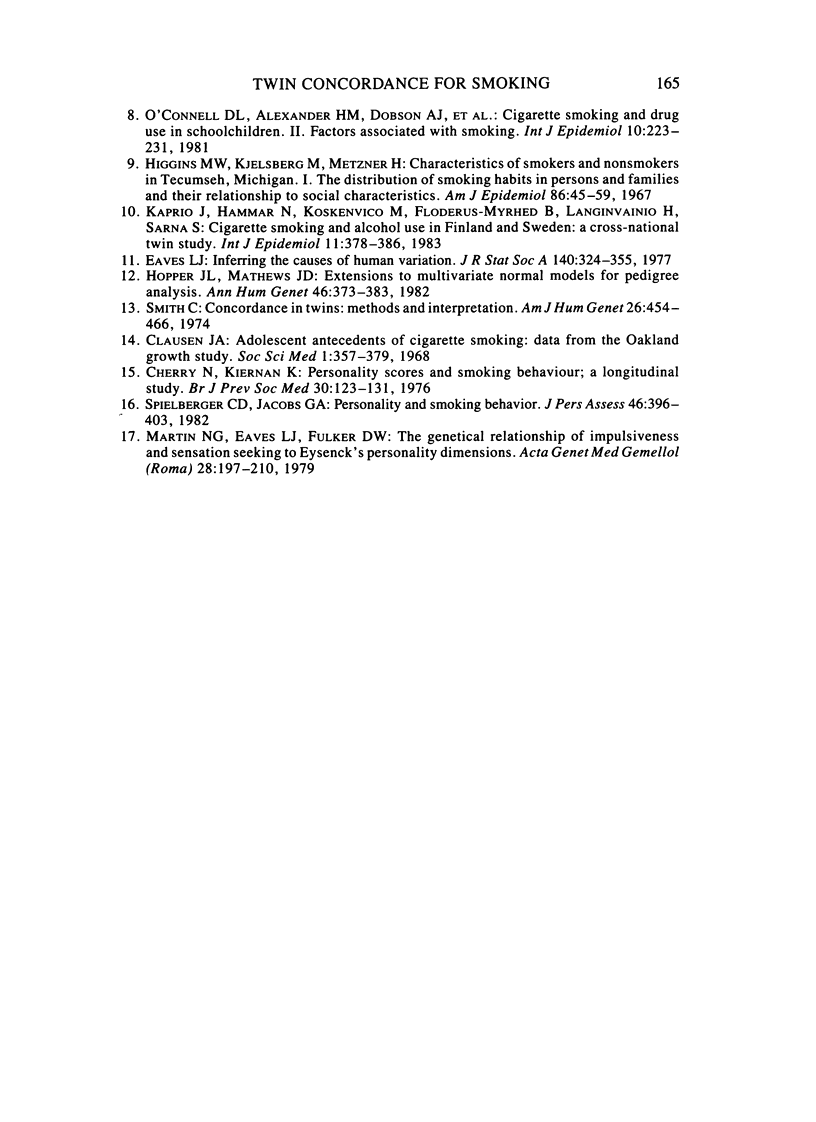
Selected References
These references are in PubMed. This may not be the complete list of references from this article.
- Cherry N., Kiernan K. Personality scores and smoking behaviour. A longitudinal study. Br J Prev Soc Med. 1976 Jun;30(2):123–131. doi: 10.1136/jech.30.2.123. [DOI] [PMC free article] [PubMed] [Google Scholar]
- Hannah M. C., Hopper J. L., Mathews J. D. Twin concordance for a binary trait. I. Statistical models illustrated with data on drinking status. Acta Genet Med Gemellol (Roma) 1983;32(2):127–137. doi: 10.1017/s0001566000006413. [DOI] [PubMed] [Google Scholar]
- Higgins M. W., Kjelsberg M., Metzner H. Characteristics of smokers and nonsmokers in Tecumseh, Michigan. I. The distribution of smoking habits in persons and families and their relationship to social characteristics. Am J Epidemiol. 1967 Jul;86(1):45–59. doi: 10.1093/oxfordjournals.aje.a120733. [DOI] [PubMed] [Google Scholar]
- Hopper J. L., Mathews J. D. Extensions to multivariate normal models for pedigree analysis. Ann Hum Genet. 1982 Oct;46(Pt 4):373–383. doi: 10.1111/j.1469-1809.1982.tb01588.x. [DOI] [PubMed] [Google Scholar]
- Kaprio J., Hammar N., Koskenvuo M., Floderus-Myrhed B., Langinvainio H., Sarna S. Cigarette smoking and alcohol use in Finland and Sweden: a cross-national twin study. Int J Epidemiol. 1982 Dec;11(4):378–386. doi: 10.1093/ije/11.4.378. [DOI] [PubMed] [Google Scholar]
- Martin N. G., Eaves L. J., Fulker D. W. The genetical relationship of impulsiveness and sensation seeking to Eysenck's personality dimensions. Acta Genet Med Gemellol (Roma) 1979;28(3):197–210. doi: 10.1017/s0001566000009053. [DOI] [PubMed] [Google Scholar]
- Martin N. G., Martin P. G. The inheritance of scholastric abilities in a sample of twins. I. Ascertainments of the sample and diagnosis of zygosity. Ann Hum Genet. 1975 Oct;39(2):213–218. doi: 10.1111/j.1469-1809.1975.tb00124.x. [DOI] [PubMed] [Google Scholar]
- O'Connell D. L., Alexander H. M., Dobson A. J., Lloyd D. M., Hardes G. R., Springthorpe H. J., Leeder S. R. Cigarette smoking and drug use in schoolchildren. II. Factors associated with smoking. Int J Epidemiol. 1981 Sep;10(3):223–231. doi: 10.1093/ije/10.3.223. [DOI] [PubMed] [Google Scholar]
- Smith C. Concordance in twins: methods and interpretation. Am J Hum Genet. 1974 Jul;26(4):454–466. [PMC free article] [PubMed] [Google Scholar]
- Spielberger C. D., Jacobs G. A. Personality and smoking behavior. J Pers Assess. 1982 Aug;46(4):396–403. doi: 10.1207/s15327752jpa4604_11. [DOI] [PubMed] [Google Scholar]


